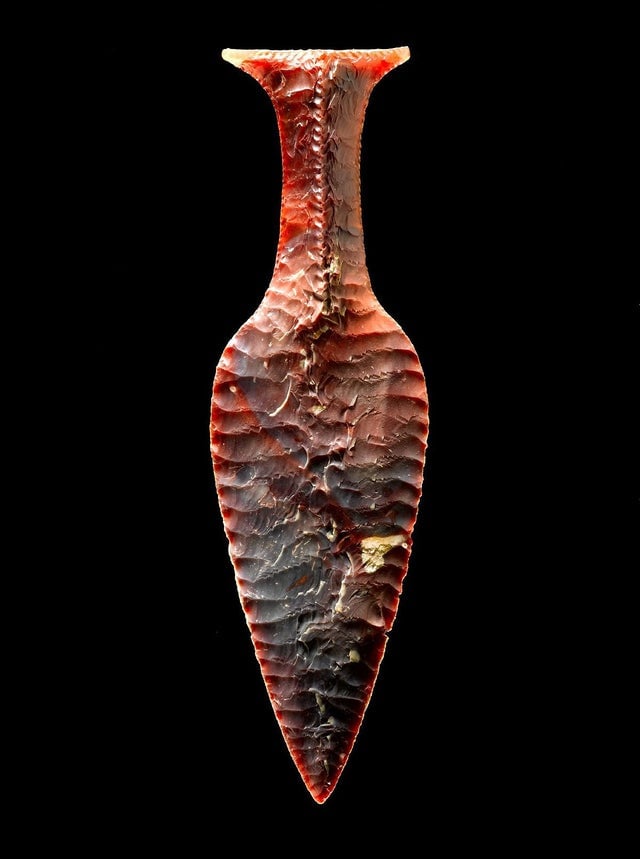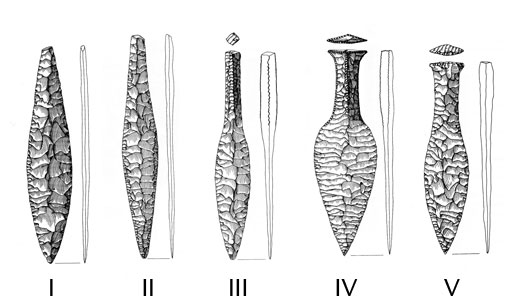The Hindsgavl Dagger, Faeno

During the Neolithic period, flint craftsmen achieved remarkable levels of technical expertise. An exceptional example of this high-quality flint craftsmanship at the end of the Stone Age is the magnificent dagger from Hindsgavl. This dagger boasts a blade thickness of less than 1 cm and is considered one of the finest specimens. It was discovered around 1876 on Fenyo Island in the Little Belt, Denmark. This particular type of dagger is often referred to as the “fishtail dagger” due to its fishtail-shaped handle. Daggers featuring pressure bars marked the beginning of the late Stone Age, earning the period from 2400 to 1800 B.C. the name “dagger period.”
Not everyone possessed the skill to craft a flint dagger of the caliber of the Hindsgavl dagger. It was a highly specialized craft, superior to anything seen before, and required a master of the art. The key to creating sophisticated daggers lay in using what is known as the “soft technique.” By striking the flint directly with a soft hammer crafted from materials like horn or hard wood, craftsmen could shape the initial rough form of the flint object. Subsequently, a small tool could be pressed against the surface of the dagger to carefully remove small elongated flint flakes.
Flint daggers made their appearance towards the end of the Neolithic period, coinciding with the advent of the Early Bronze Age on the European continent. These daggers became potent symbols of social status. This trend also took root in Denmark, where daggers were crafted from flint, following the stylistic lines of European metal daggers. The technical prowess of flint craftsmen allowed them to create elegant daggers with thin blades. Their skills reached their zenith at the conclusion of the dagger period, exemplified by the exceptional Hindsgavl dagger. During this period, there was fierce competition with imported metal daggers, marking the end of the heyday of flint craftsmanship. Although bronze gained widespread popularity, the production of exquisite flint daggers continued, even during the Bronze Age.

Crafted flint daggers were highly sought after among the farming communities of Denmark at the close of the third millennium BC. These daggers were utilized throughout the country, but they were predominantly produced in northern Jutland and southeastern Denmark. While many flint implements from the Stone Age, such as axes and knives, served practical purposes in daily life, daggers appeared to be less suited for everyday tasks. Instead, they held a different role—they were objects of prestige, used to signify the social status of their owners. In men’s graves from the dagger period, you can often find daggers placed on the body belt.
During the Dagger Age, which marked the end of the Neolithic period, magnificent flint daggers gained popularity. Although flint craftsmen tended to be conservative and rooted in tradition, they were also receptive to changing fashion trends. As a result, the appearance of flint daggers evolved over time. By studying these design changes, archaeologists have classified flint daggers into six distinct types, each with relatively narrow dating ranges. These types are primarily distinguished by the design of the hilt, the handle or grip of the dagger. The Hindsgavl dagger belongs to the type IV category, reflecting a specific style and period in flint dagger craftsmanship.

